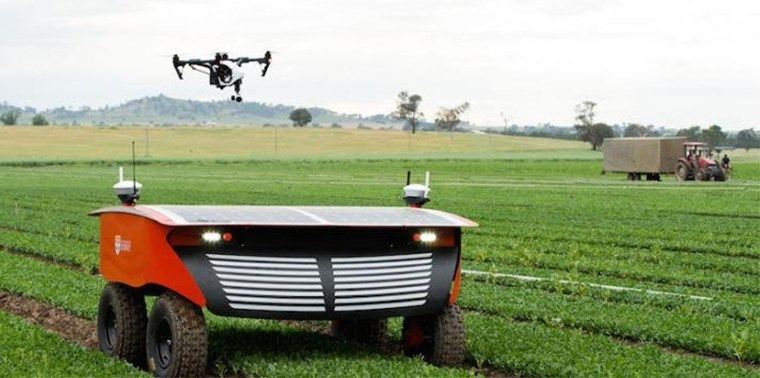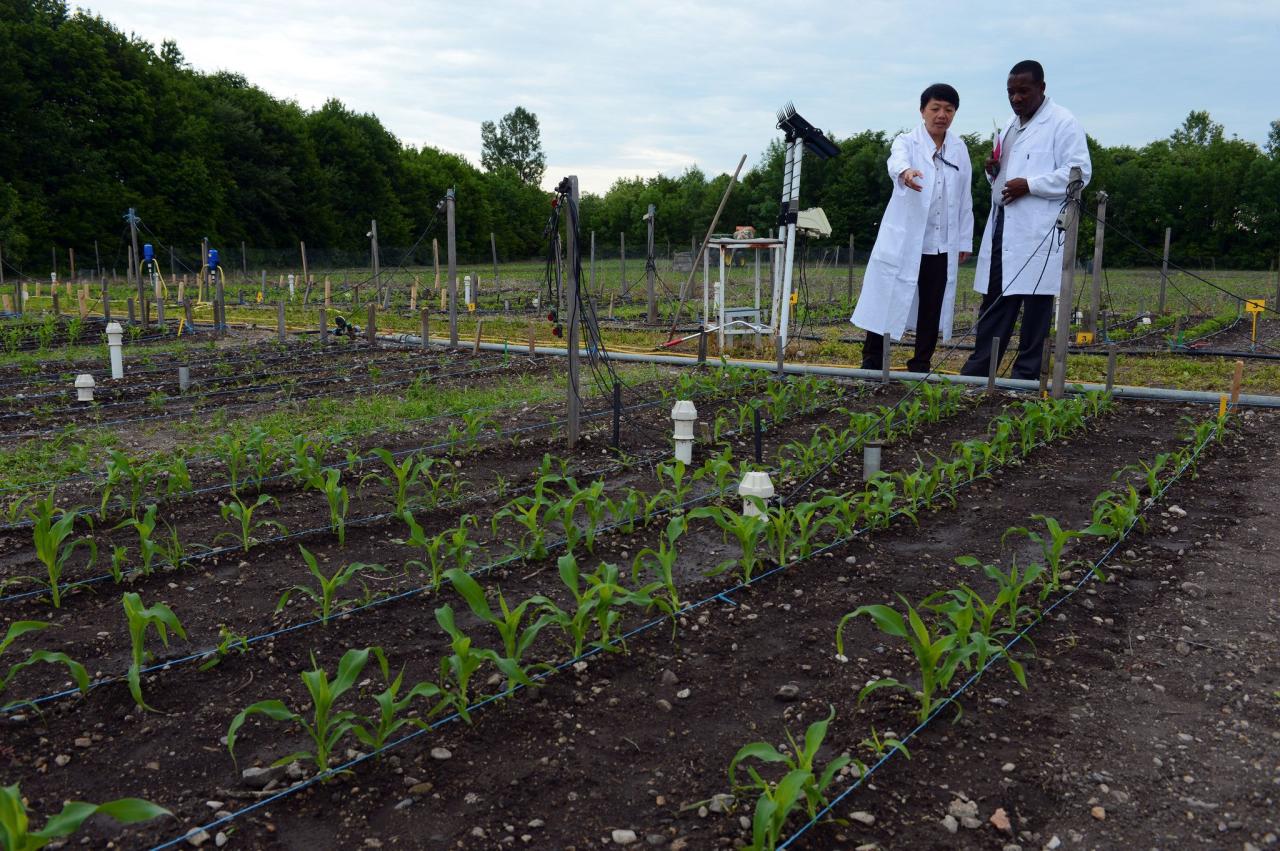Smart agriculture, often referred to as precision agriculture, leverages advanced technologies to optimize farming practices. This modern approach is pivotal in enhancing agricultural productivity and sustainability. By integrating various technological tools, traditional farming is being transformed into a data-driven, efficient, and environmentally friendly industry.
This shift not only increases yields but also ensures the responsible use of resources, addressing the challenges posed by climate change and population growth.
Comprehensive Overview of Smart Agriculture Developments
Smart agriculture encompasses a range of technologies designed to improve every aspect of farming. These advancements facilitate better decision-making, streamline operations, and promote sustainable practices. The core components of smart agriculture include:
A. Internet of Things (IoT): IoT devices play a crucial role in gathering real-time data from the field, enabling farmers to monitor and manage their operations with unprecedented precision.
B. Artificial Intelligence (AI): AI algorithms process and analyze vast amounts of agricultural data, providing insights that help in predicting crop yields, detecting diseases, and optimizing resource usage.
C. Drones and Robotics: Equipped with sensors and imaging technology, drones and robots monitor crop health, manage pest control, and perform tasks such as planting and harvesting with high accuracy and efficiency.
D. Satellite Imaging: Satellite technology offers comprehensive views of large agricultural areas, aiding in the assessment of crop health, soil conditions, and overall farm management.
E. Big Data Analytics: The aggregation and analysis of large datasets from various sources allow for informed decision-making and strategic planning in farming operations.
Key Technologies Driving Smart Agriculture
The backbone of smart agriculture lies in the integration of several key technologies that work together to enhance farming practices.
A. Internet of Things (IoT)
IoT devices are integral to smart agriculture, providing continuous monitoring and data collection from the agricultural environment. These devices include sensors that measure soil moisture, temperature, humidity, and other critical parameters. The real-time data gathered by IoT devices enables farmers to make informed decisions about irrigation, fertilization, and pest control, thereby optimizing resource use and improving crop yields.
Role of IoT Sensors in Agriculture:
- Data Collection: IoT sensors are strategically placed throughout the farm to collect data on various environmental factors.
- Real-Time Monitoring: Continuous monitoring allows for immediate responses to changing conditions, ensuring optimal growing environments.
- Data Analysis: The collected data is analyzed to identify trends and make predictions about future agricultural needs.
Impact of IoT on Decision-Making:
IoT enhances decision-making by providing accurate and timely information. Farmers can identify patterns, predict potential issues, and implement proactive measures to maintain crop health and maximize yields. This data-driven approach leads to more efficient farming operations and sustainable practices.
Examples of Successful IoT Applications:
- United States: Farmers use IoT devices to remotely monitor crops and livestock, resulting in increased efficiency and cost savings.
- Australia: IoT sensors track soil moisture and automate irrigation systems, promoting water conservation and improving crop yields.
- India: IoT technology monitors weather conditions, providing real-time alerts to protect crops from extreme weather events and reduce losses.
B. Artificial Intelligence (AI)
AI is revolutionizing the agricultural sector by introducing sophisticated technologies such as machine learning and predictive analytics. These AI-powered solutions enhance traditional farming methods, making agriculture more efficient and sustainable.
AI-Powered Solutions for Crop Monitoring:
- Satellite and Drone Data Analysis: AI algorithms analyze imagery from satellites and drones to monitor crop health and growth patterns.
- Predictive Analytics: These tools help detect early signs of nutrient deficiencies, pests, and diseases, enabling timely interventions.
- Yield Prediction: Machine learning models forecast crop yields based on environmental factors, aiding in informed planting and harvesting decisions.
AI-Powered Solutions for Disease Detection:
- Image Recognition: AI technologies identify plant diseases through visual symptoms and leaf patterns.
- Pattern Analysis: AI algorithms analyze data to diagnose diseases accurately and recommend appropriate treatments.
- Early Intervention: Early detection prevents the spread of diseases, reducing crop losses and enhancing productivity.
AI-Powered Solutions for Yield Forecasting:
- Data Processing: AI processes historical data on weather, soil quality, and crop performance to predict yields with high accuracy.
- Resource Allocation: Accurate yield forecasts help farmers optimize resource use, plan harvest schedules, and negotiate better prices.
- Risk Management: Predictive capabilities allow farmers to minimize risks and maximize output through strategic planning.
Integration of AI in Farm Machinery:
AI-powered sensors and actuators are integrated into farm machinery for autonomous operations such as planting, irrigation, and harvesting. These smart machines can adjust their actions in real-time based on environmental data, enhancing resource utilization and reducing the need for manual labor.

Potential of AI to Optimize Resource Utilization:
AI technologies enable precision agriculture by providing real-time insights into soil moisture, nutrient requirements, and crop health. Implementing AI-driven solutions minimizes input wastage, reduces environmental impact, and boosts overall crop yields, ensuring sustainable farming practices.
C. Drones and Robotics
Drones and robotic systems are becoming indispensable in modern agriculture, offering precise and efficient management of crops.
Applications of Drones in Agriculture:
- Crop Health Monitoring: Drones equipped with multispectral sensors assess crop health and detect issues such as pest infestations or nutrient deficiencies.
- Pest Control: Drones can accurately spray pesticides, reducing the need for manual labor and minimizing chemical usage.
- Planting and Seeding: Drones facilitate the precise planting of seeds, ensuring optimal spacing and distribution.
Robotic Systems in Farming:
- Automated Harvesting: Robotics streamline the harvesting process, increasing speed and reducing labor costs.
- Weed Control: Robotic weeders identify and eliminate weeds without harming crops, promoting healthier plant growth.
- Livestock Management: Automated systems monitor and manage livestock health and welfare, ensuring efficient farm operations.
Benefits of Smart Agriculture
Smart agriculture offers a multitude of benefits that enhance both productivity and sustainability in farming.
A. Increased Efficiency
Smart agriculture solutions optimize resource usage, leading to higher yields and reduced operational costs. Technologies such as IoT and AI streamline farming processes, automate tasks, and enable precise management of inputs like water, fertilizers, and pesticides. This increased efficiency translates to better resource allocation and improved overall farm performance.
B. Sustainability
By monitoring crop conditions and applying inputs only when necessary, smart agriculture promotes sustainable farming practices. This reduces environmental impact by minimizing the use of water, fertilizers, and pesticides, thereby conserving natural resources and protecting ecosystems.
C. Precision Farming
Precision farming techniques allow farmers to tailor their approach to each individual plant, maximizing productivity and minimizing waste. This targeted management ensures that each plant receives the optimal amount of resources, leading to healthier crops and higher yields.
Advanced Technologies in Smart Agriculture
The integration of advanced technologies in smart agriculture enhances the ability to monitor and manage agricultural activities with greater precision and efficiency.
A. Internet of Things (IoT) in Smart Agriculture
The incorporation of IoT in smart agriculture has fundamentally changed how farmers monitor and manage their crops, soil, and livestock. IoT devices collect real-time data on various parameters, enabling farmers to make informed decisions that enhance productivity and sustainability.
Role of IoT Sensors in Agriculture:
- Environmental Monitoring: IoT sensors track weather conditions, soil moisture, and crop health, providing essential data for effective farm management.
- Data-Driven Decisions: The data collected by IoT sensors is analyzed to optimize irrigation schedules, adjust fertilizer application, and detect early signs of plant diseases.
- Operational Efficiency: Real-time data allows for the efficient allocation of resources, reducing waste and improving overall farm operations.
Impact of IoT on Decision-Making:
The implementation of IoT in agriculture enhances decision-making by providing accurate and timely information. Farmers can identify trends, predict potential issues, and take proactive measures to improve productivity and maximize yields. This technology empowers farmers to make data-driven decisions that result in more efficient operations and sustainable practices.
Examples of Successful IoT Applications:
- United States: IoT devices enable farmers to remotely monitor their crops and livestock, increasing efficiency and reducing costs.
- Australia: IoT sensors track soil moisture levels and automate irrigation systems, conserving water and improving crop yields.
- India: IoT technology monitors weather conditions and provides real-time alerts, helping farmers protect their crops from extreme weather events and mitigate losses.

B. Artificial Intelligence (AI) Applications in Agriculture
AI is transforming the agriculture sector by introducing innovative technologies that enhance traditional farming practices. AI-powered solutions provide valuable insights and automation, making agriculture more efficient and sustainable.
AI-Powered Solutions for Crop Monitoring:
- Satellite and Drone Data Analysis: AI algorithms analyze imagery from satellites and drones to monitor crop health and growth patterns.
- Predictive Analytics: These tools help detect early signs of nutrient deficiencies, pests, and diseases, enabling timely interventions.
- Yield Prediction: Machine learning models forecast crop yields based on environmental factors, aiding in informed planting and harvesting decisions.
AI-Powered Solutions for Disease Detection:
- Image Recognition: AI technologies identify plant diseases through visual symptoms and leaf patterns.
- Pattern Analysis: AI algorithms analyze data to diagnose diseases accurately and recommend appropriate treatments.
- Early Intervention: Early detection prevents the spread of diseases, reducing crop losses and enhancing productivity.
AI-Powered Solutions for Yield Forecasting:
- Data Processing: AI processes historical data on weather conditions, soil quality, and crop performance to predict yields with high accuracy.
- Resource Allocation: Accurate yield forecasts help farmers optimize resource use, plan harvest schedules, and negotiate better prices.
- Risk Management: Predictive capabilities allow farmers to minimize risks and maximize output through strategic planning.
Integration of AI in Farm Machinery:
AI-powered sensors and actuators are integrated into farm machinery for autonomous operations such as planting, irrigation, and harvesting. These smart machines can adjust their actions in real-time based on environmental data, enhancing resource utilization and reducing the need for manual labor.
Potential of AI to Optimize Resource Utilization:
AI technologies enable precision agriculture by providing real-time insights into soil moisture levels, nutrient requirements, and crop health. Implementing AI-driven solutions minimizes input wastage, reduces environmental impact, and boosts overall crop yields, ensuring sustainable farming practices.
Sustainable Practices in Smart Agriculture
Sustainability is a cornerstone of smart agriculture, driving the adoption of innovative farming techniques and technologies that promote environmental stewardship and long-term productivity.
A. Precision Farming
Precision farming is a sustainable technique that leverages technology to enhance crop yield while minimizing inputs such as water, fertilizers, and pesticides. By utilizing data-driven insights from sensors, drones, and GPS technology, farmers can make informed decisions about planting, irrigation, and pest control, leading to more efficient farming practices.
Key Aspects of Precision Farming:
- Data-Driven Decisions: Utilizing real-time data to optimize farming practices.
- Resource Efficiency: Minimizing the use of water, fertilizers, and pesticides through targeted application.
- Enhanced Productivity: Maximizing crop yields by tailoring farming practices to specific crop needs.
B. Vertical Farming
Vertical farming is another sustainable practice gaining popularity in smart agriculture. This method involves growing crops in vertically stacked layers, often in controlled indoor environments. By maximizing space and using techniques like hydroponics and LED lighting, vertical farming reduces water usage, eliminates the need for pesticides, and enables year-round crop production.
Benefits of Vertical Farming:
- Space Optimization: Maximizing crop production in limited spaces.
- Water Conservation: Significantly reducing water usage through efficient hydroponic systems.
- Pesticide-Free Production: Eliminating the need for chemical pesticides, leading to healthier crops.
C. Renewable Energy Integration
Renewable energy sources, such as solar power, play a crucial role in powering smart agriculture systems. By harnessing solar energy to run sensors, drones, and irrigation systems, farmers can reduce reliance on fossil fuels and lower their carbon footprint. The integration of renewable energy promotes sustainability by providing a clean and reliable power source for agricultural operations.
Role of Renewable Energy:
- Powering IoT Devices: Solar-powered sensors and devices ensure continuous monitoring without the need for external power sources.
- Sustainable Operations: Reducing the environmental impact of farming activities by utilizing clean energy.
- Cost Savings: Lowering energy costs by relying on renewable sources.
D. Water Conservation and Environmental Impact
Smart agriculture contributes to reducing water usage through technologies like drip irrigation, soil moisture sensors, and weather forecasting systems. By optimizing irrigation schedules and monitoring soil conditions in real-time, farmers can minimize water wastage and ensure efficient use of this precious resource. Additionally, smart agriculture practices help minimize environmental impact by reducing chemical runoff, soil erosion, and greenhouse gas emissions.
Strategies for Water Conservation:
- Drip Irrigation: Delivering water directly to plant roots, reducing evaporation and runoff.
- Soil Moisture Sensors: Monitoring soil moisture levels to optimize irrigation timing and quantity.
- Weather Forecasting: Using accurate weather data to plan irrigation and avoid overwatering.
Minimizing Environmental Impact:
- Chemical Runoff Reduction: Precision application of fertilizers and pesticides minimizes the risk of chemicals entering water bodies.
- Soil Health Maintenance: Sustainable farming practices prevent soil erosion and degradation.
- Greenhouse Gas Emissions: Reducing emissions through efficient resource use and renewable energy integration.
E. Eco-Friendly Practices and Technologies
Various eco-friendly practices and technologies promote sustainability in agriculture. These include cover cropping to enhance soil health, integrated pest management to reduce pesticide usage, and crop rotation to prevent soil depletion. Additionally, the use of biodegradable mulches, organic fertilizers, and composting helps maintain a healthy ecosystem and preserve natural resources for future generations.
Eco-Friendly Practices:
- Cover Cropping: Planting cover crops to improve soil fertility and prevent erosion.
- Integrated Pest Management (IPM): Combining biological, cultural, and mechanical methods to control pests with minimal chemical use.
- Crop Rotation: Alternating crops to maintain soil health and reduce pest and disease cycles.
Eco-Friendly Technologies:
- Biodegradable Mulches: Reducing plastic waste and improving soil health.
- Organic Fertilizers: Enhancing soil fertility without harmful chemicals.
- Composting: Recycling organic waste to create nutrient-rich soil amendments.
The Future of Smart Agriculture
The future of smart agriculture is poised to bring even more innovations that will further enhance farming efficiency and sustainability. Emerging technologies such as blockchain for supply chain transparency, advanced genetic engineering for crop improvement, and enhanced robotics for autonomous farming operations will play significant roles in shaping the agricultural landscape. Additionally, increased connectivity and data sharing among farmers, researchers, and technology providers will foster collaborative efforts to address global food security challenges.
Conclusion
Smart agriculture represents a significant shift in farming practices, driven by technological advancements that enhance efficiency, sustainability, and productivity. By integrating IoT, AI, drones, and other cutting-edge technologies, farmers can optimize resource use, reduce environmental impact, and increase crop yields. Sustainable practices such as precision farming, vertical farming, and renewable energy integration further support the long-term viability of agricultural operations. As technology continues to evolve, smart agriculture will play an essential role in ensuring food security and promoting environmental stewardship in the face of global challenges.
Quick FAQs
How does smart agriculture contribute to increased efficiency?
Smart agriculture utilizes technologies like IoT and AI to optimize resource utilization, automate processes, and make data-driven decisions, leading to improved efficiency.
What are some examples of sustainable practices in smart agriculture?
Examples include precision farming, vertical farming, and the use of renewable energy sources like solar power to reduce environmental impact and promote sustainability.














